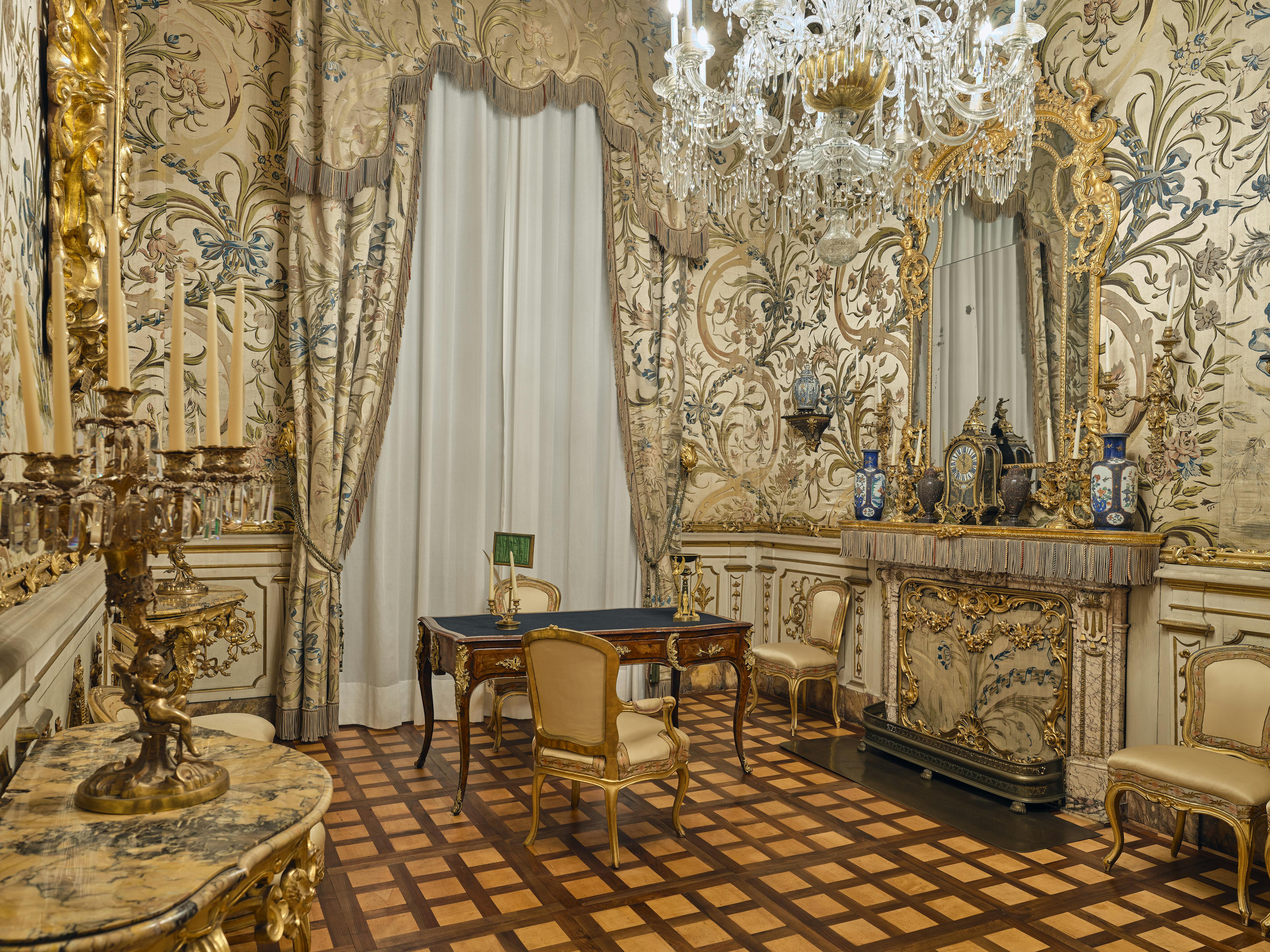King's study
The "oblong room", as it was called in documents, was used as the study of King Umberto I during the Savoy era. Of exceptional value are the textile artefacts, the floor carpet and the silk wallpaper, precious testimonies of the high Florentine craftsmanship, both chosen in the eighteenth century by the Lorraine Grand Dukes.
The carpet, signed and dated "Giovanni Battista Podestà e figli, Firenze, 1798” (“Giovanni Battista Podestà and sons, Florence, 1798”), was made in the factory, which was also renowned for its production of velvets, and which the Podestà and his heirs ran as official suppliers to the Pitti Palace from at least 1767 until 1811. In particular, this piece was made to the design of the master of ornamentation of the Royal Schools, Francesco Luigi Levrier, who proposed a repertoire of neoclassical taste that regulated the genre of grotesques in antique-style linear frames.
As for the wallpaper that was only installed in this room in 1899, we know that it was consigned to the Wardrobe in 1770, originally intended for one of the rooms in the Grand Duchess' apartment. White in colour, according to the chromatic preference of the period, and enriched with nervous gilded ramages, with pink flowers and light blue Louis XVI bows, it appears to be of a quality comparable to the prized silks of Lyon, but it was purchased by the Imperial and Royal Factory of Florence, according to a precise order from Peter Leopold of Hapsburg-Lorraine, who intended in this way to support and increase the local silk industry, daughter of a very ancient local tradition that in the Middle Ages, with the Art of Silk, was a pillar of the city's civil and economic society.
